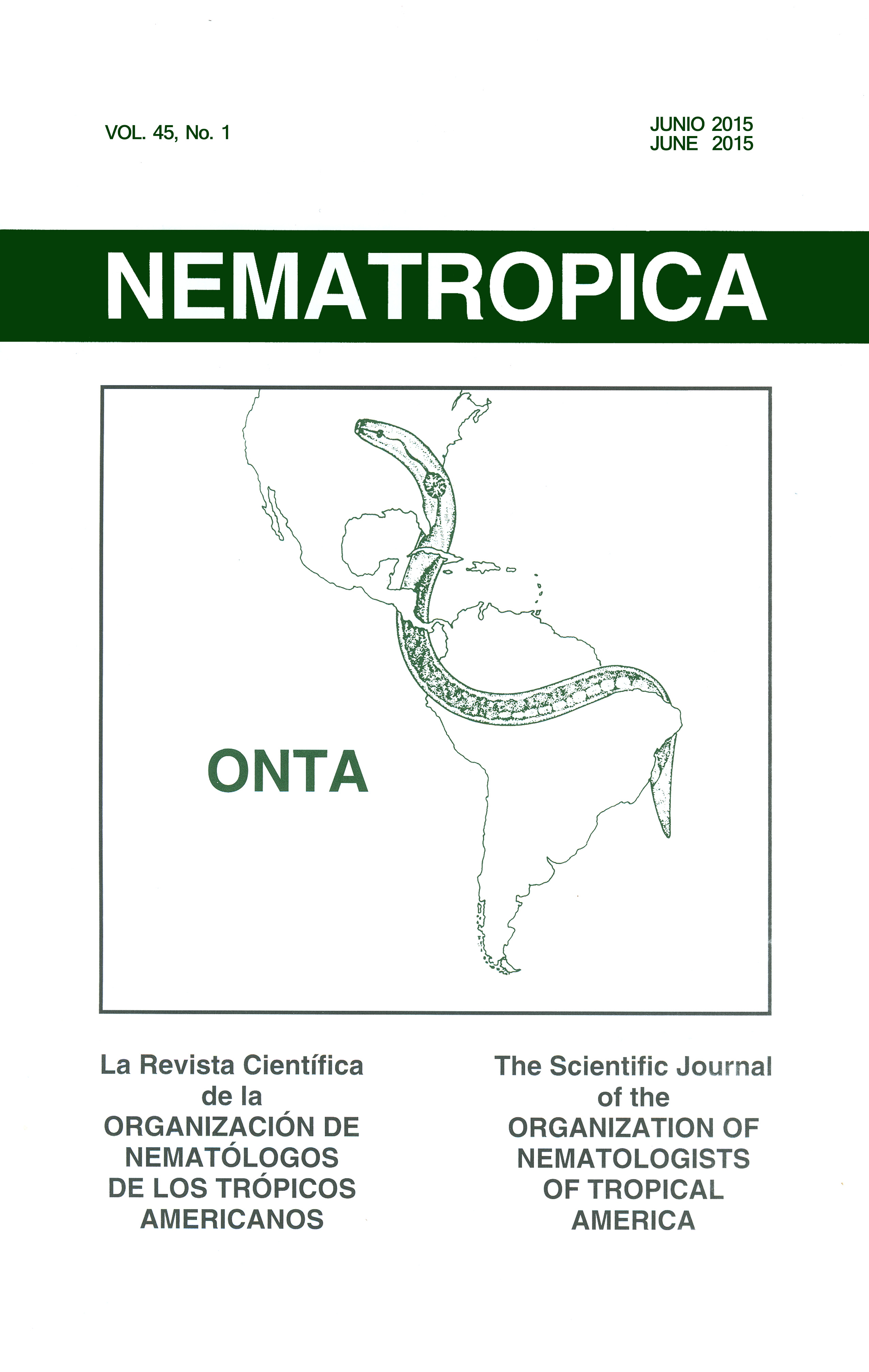DECOMPOSITION OF DEAD EGGS OF HETERODERA GLYCINESIN SOILS
Keywords:
decomposition, Heterodera glycines, nematode eggs, soil pH, soybean cyst nematode, swine manureAbstract
A greenhouse experiment was conducted to study the rate of decomposition of autoclave-heating-killed eggs of the soybean cyst nematode, Heterodera glycines, in soil. The experiment was a factorial design including three
soil pH levels and five treatment combinations of heating and amendments of liquid swine manure or untreated field soil that contained natural microbial communities. Soil pH affected the decomposition of H. glycines eggs
contained in cysts, while no effect was detected for the amendments of swine manure and untreated field soil. The rate of decomposition was greater in the lower pH soil at 5.6 and 6.7 than in the pH 7.8 soil. In the pH 7.8 soil, it took approximately 450 d to reduce egg numbers below detectable levels, while in the pH 5.6 and 6.7 soils, the egg number declined to 0 at about 270 d after the experiment was set up. The predicted percentages of eggs remaining at 2 mon were 25% and 34% in the pH 5.6 and 6.7 soils and pH 7.8 soil, respectively. This study demonstrated that in some greenhouse studies of cyst nematodes, the residual dead eggs in soil may need to be measured for accurate determination of live egg population densities.

